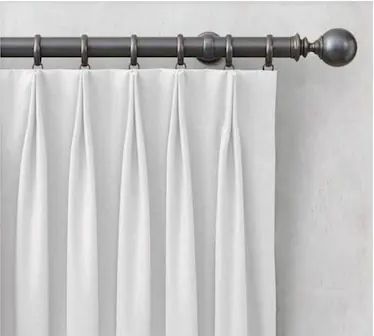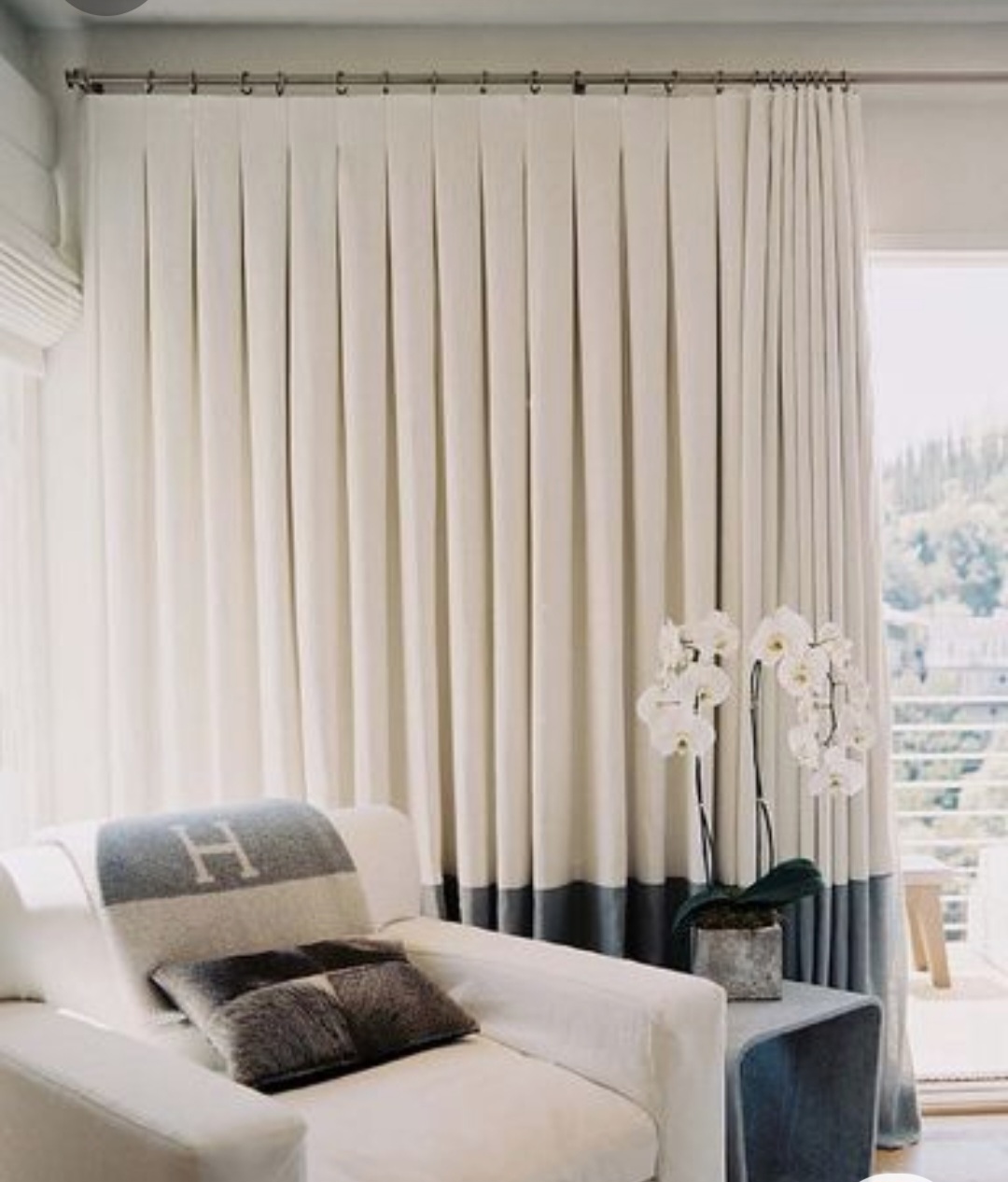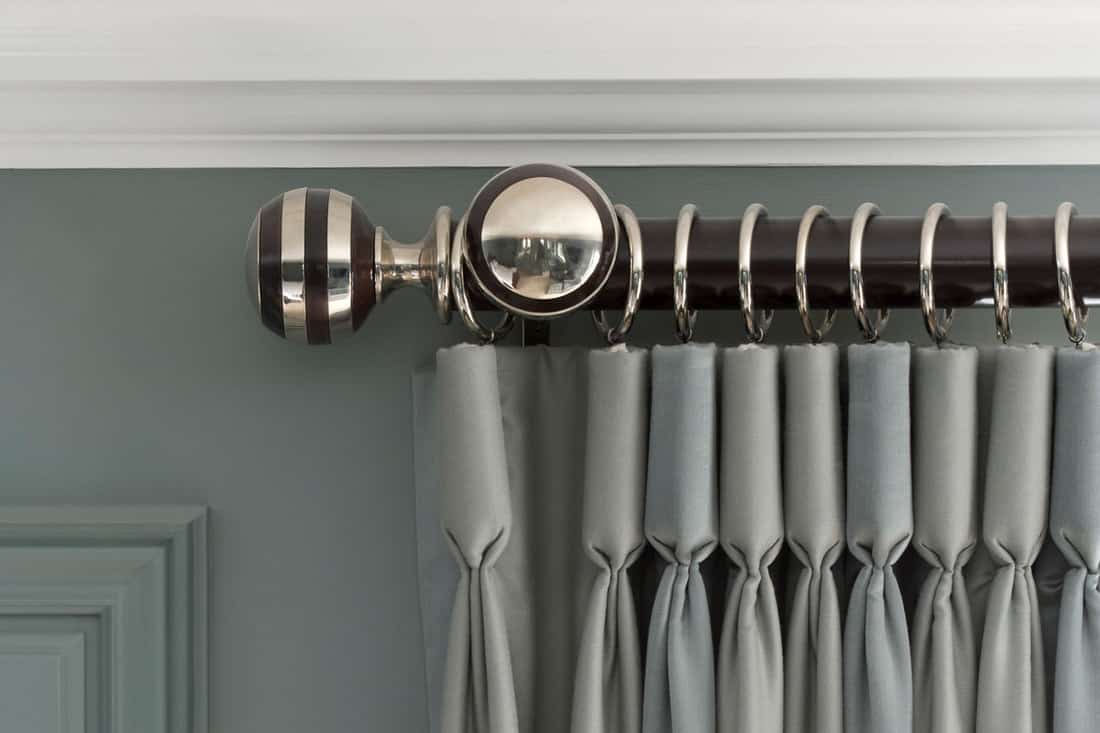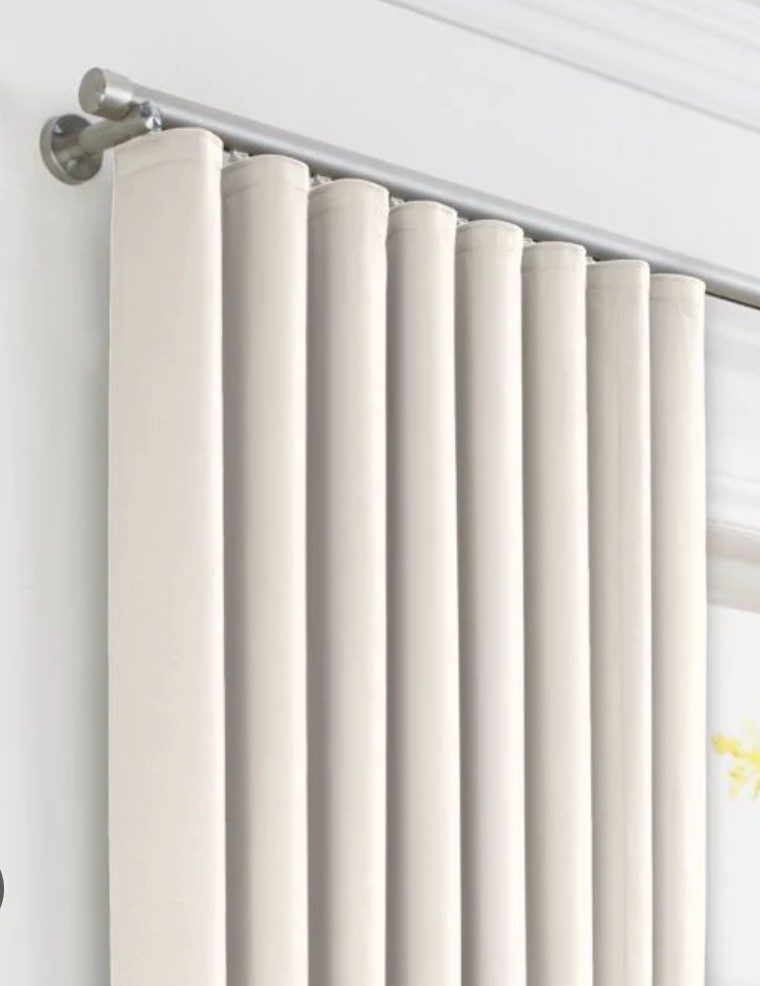The Perfect Pleat
Mar 17, 2023Custom draperies are important dramatic design elements that add beauty, texture, color, and depth to any room. They provide Homeowners with the perfect opportunity to reflect their own unique personal style and taste. Every component of drapery creation is custom from the fabric to the embellishments to the rod to the trim/border. Therefore, drapery can be exactly what you’d like it to be.
A pleat is a fold in the fabric that adds volume, texture, and detail to a drapery panel. Pleats give your draperies structure and shape. And each type of pleat results in a different look, feel and style. Pleats are one of the details that make custom draperies stand out from retail options.
The pleating style you choose directly impacts how the fabric will hang, the fullness and stack back of the drapery, and how functional your panels will be. Five popular pleating styles are listed below.

1. French pleated drapery
French pleats, also known as pinch pleats, consist of narrow and closely spaced folds called fingers. They appear to be “pinched” at the base and form fans above and below the pleat. If you choose draperies with a French or Pinch pleat, they will hold the line of the pleat from the fan at the top to the bottom of the hem.
The French pleat is a traditional, classic and timeless typle. This style gives your room an elegant, finished look and offers consistent fullness throughout the drapery. The closer the folds are to each other, the fuller your drapery panel will be.
To achieve drapery fullness, French pleated drapery will use two-and-a-half times the fabric of the panel width. That creates a large stack back, which is the amount of space the drapery takes up on the sides when opened. If you have a view you’d like to keep unobstructed, you’ll need plenty of room on each side of the window in which to mount the drapery brackets.

2. Euro pleated drapery
The euro pleat, also called a Parisian pleat, is a modern twist on the French pleat. The folds are pinched at the top and open at the bottom, allowing the fabric to flow effortlessly to the floor. Euro pleated drapery gives the illusion of length because the folds continue straight to the top of the panel.
Like french pleated drapery, euro pleated drapery is very full. It requires about two-and-a-half times the fabric of the panel width, so it has a large stack back.
Euro pleated drapery is very easy to open and close. Because it’s a modern twist on the french pleat, it not only looks great with traditional home decor as well as with transitional and/or contemporary home decor.

3. Box pleated drapery
A Box pleat, also known as a tuxedo pleat, is achieved by folding two lengths of fabric away from each other in opposite directions. The folds meet in the middle of the backside of the fold. The fabric is gathered and sewn together to form a box at the top of your drapery, which holds that shape down to the bottom of the panel.
Box pleated drapery has a full and luxurious look but uses less fabric so the stack back is smaller. If you want draperies with lots of volume but don’t have enough space to the sides of your window, we recommend choosing a box pleat.
The box pleat is a clean tailored style with a structured header and a more relaxed body. It works for almost any interior design style, but we particularly love it in contemporary homes.

4. Goblet pleated drapery
Goblet pleats are formed by creating small folds below the drapery header. Each pleat looks like a goblet or wine glass. These types of pleats offer an elegant and sophisticated style that is perfect in a more formal setting.
Goblet pleated draperies provide distinctive style but aren’t optimal from a functional perspective. If you want stationary panels that frame a window, then goblet pleats might be the perfect choice. Just make sure you have plenty of room beside your window because they also have a large stack back.

5. Ripplefold drapery
A ripplefold is a sleek and modern option that looks great in contemporary homes. The drapery panel itself is flat, and the pleating is created by spacing out snaps, also called carriers, on the fabric and attaching them to the hardware. As the panel is connected to the hardware, the snaps create an undulating wave pattern.
Ripplefold drapery is very easy to open and close because it glides effortlessly along a specialized track system. Because ripplefold draperies require tracks and carriers, your hardware choices are more limited. And it can be difficult to conceal the hardware unless you pair your draperies with a top treatment.
Choosing the Perfect Pleating Style
Choosing the right drapery pleating styles for your home involves both aesthetics as well as functionality. As experts in this industry we would be delighted to discuss which style is best for your Design Plan and the functionality required in the space. Three key questions include the folloiwng:
- What’s the Design Style of the room? Is your taste/style traditional, contemporary or transitional ?
- How would you like the draperies to hang? You may prefer the draperies have a tailored look and hold the structed lines from the header to the floor. Or, you might want a more relaxed look that’s structured at the top but billowing as the drapery falls to the floor.
- How will the draperies function? Will the draperies be opening/closing often or will they be stationary and simply frame your window. How you use the draperies and the frequency of use are important considerations when choose the style that’s best for you.
You can further personalize your draperies by layering them with shades, cornices, and other window coverings to create a unique look. We’d love to help you design the perfect window coverings for your home. Contact us today!

